‘Integrated Field’, widely known for their abbreviated moniker ‘IF’, has been somewhat of a household name in Thailand’s architectural industry with projects that have been mentioned in various media platforms. But what’s equally interesting is the way the studio has been run throughout the years, especially with 12 founding partners, making many wonder about the management and work philosophy behind IF’s continuous success. We had a chance to meet with three of the partners, Kanin Manthanachart, Lerpong Rewtrakulpaiboon and Korkiat Kittisoponpong to talk about IF’s stories and the approaches they have taken when it comes to managing their design firm, in aspects and details that have never been revealed anywhere else.
Text: Nuttawadee Suttanan
Photo Courtesy of Integrated Field
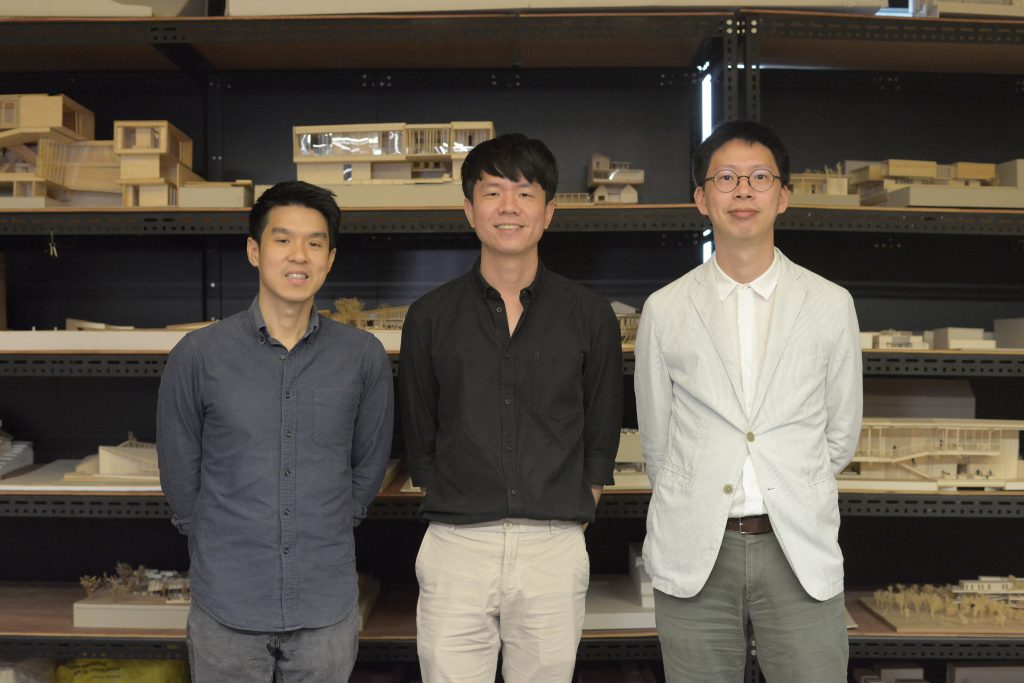
“Integrated Field” หรือ “IF” เป็นชื่อที่คุ้นเคยของใครหลายคนในวงการสถาปัตยกรรมเมืองไทย ผลงานการออกแบบของ IF ถูกกล่าวถึงอยู่บ่อยครั้ง ผ่านสื่อช่องทางต่าง ๆ แต่อีกสิ่งหนึ่งที่น่าสนใจไม่แพ้กันคือการบริหารจัดการบริษัทที่มีหุ้นส่วนเริ่มต้นถึง 12 คน ซึ่งสิ่งนี้เองที่ทำให้เกิดคำถามในเรื่องการทำงานของ IF อยู่เสมอว่าพวกเขาทำงานกันอย่างไร วันนี้เราได้มีโอกาสพบกับ 3 หุ้นส่วนของ IF อย่าง นิน คณิน มัณฑนะชาติ โอ เลอพงษ์ ริ้วตระกูลไพบูลย์ และ เฟย ก่อเกียรติ กิตติโสภณพงศ์ เพื่อร่วมพูดคุยถึงเรื่องราวของ IF และการบริหารงานในแบบฉบับ IF ที่หลายคนอาจจะไม่เคยทราบมาก่อน
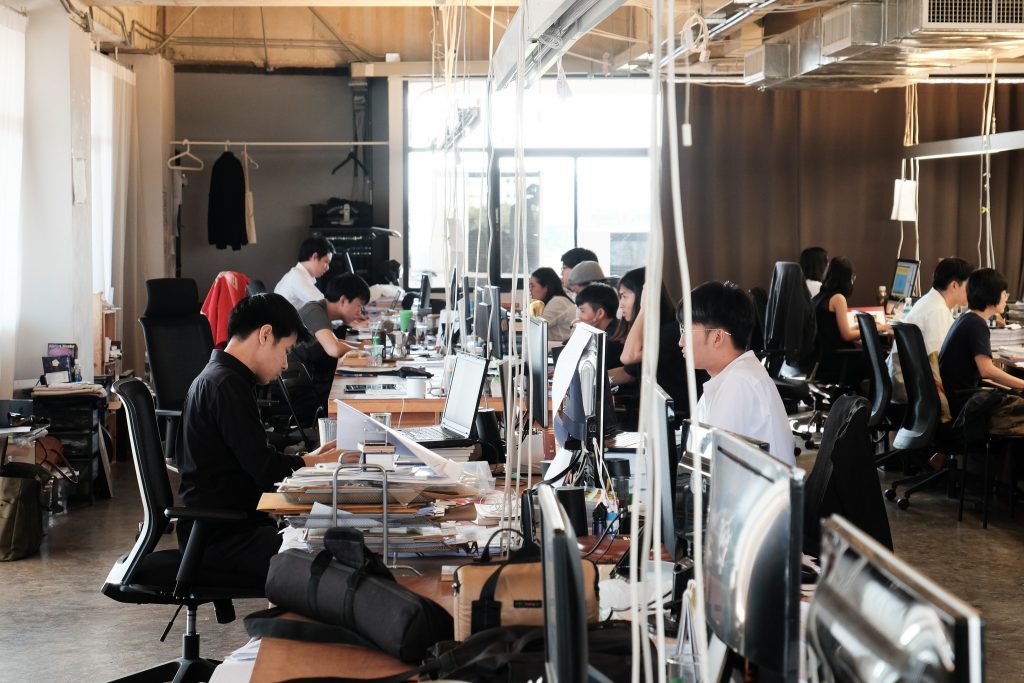
“เริ่มด้วยความสบายใจ”
ประโยคนี้อาจเป็นคำจำกัดความจุดเริ่มต้นของ IF ที่ดีที่สุด พวกเขาทั้งสิบสองคนเริ่มจากกลุ่มเพื่อนสมัยเรียนที่มหาวิทยาลัยที่ทำกิจกรรมด้วยกัน เรียนด้วยกันและใช้ชีวิตด้วยกัน หลังจากเรียนจบ ต่างคนต่างก็แยกย้ายไปทำงานตามเส้นทางของตัวเอง แต่ระหว่างนั้นพวกเขาก็มีการรวมตัวกันเป็นกลุ่มเล็กๆ เพื่อทำงานที่สนใจร่วมกันอยู่เสมอ ในปี 2552 การรวมตัวเพื่อทำงานประกวดแบบรัฐสภาแห่งใหม่ซึ่งเป็นการรวมตัวทำงานกันเยอะที่สุดหลังจากเรียนจบก็พาพวกเขาไปถึงรอบสิบทีมสุดท้ายในฐานะทีมที่อายุน้อยที่สุด และเป็นจุดเริ่มต้นของ IF ในทุกวันนี้
“เราก็คุยกันว่ามันดูมีศักยภาพที่เราทำงานร่วมกัน มันอาจจะไม่ใช่เรื่องของผลงานอย่างเดียว มันเป็นเรื่องของเคมี เรื่องของวิธีคิดที่เราคิดอะไรคล้ายๆ กัน จากวันนั้นก็เลยเริ่มลองคุยกันแล้วว่าสนใจจะทำอะไรร่วมกันไหม” (เฟย)
IF ก่อตั้งขึ้นในปี 2554 และในปีนี้ก็คือปีที่ 10 ของพวกเขา ในช่วงแรกการเริ่มคุยเรื่องทำบริษัทไม่ได้มีแค่พวกเขาสิบสองคนแต่ด้วยเงื่อนไขและปัจจัยแวดล้อม สุดท้าย IF ก็เริ่มต้นด้วยหุ้นส่วน 12 คน สิบเอ็ดคนจากห้าภาควิชาในคณะสถาปัตยกรรมศาสตร์ จุฬาลงกรณ์มหาวิทยาลัย และอีกหนึ่งคนจากคณะสถาปัตยกรรมศาสตร์ สถาบันเทคโนโลยีพระจอมเกล้าเจ้าคุณทหารลาดกระบัง เป้าหมายเริ่มแรกของพวกเขาไม่ใช่เรื่องของการทำธุรกิจหรือรายได้ แต่เป็นการได้ทำงานกับเพื่อน เพื่อผลิตงานที่ดีและประสบความสำเร็จในเชิงการออกแบบ นี่จึงเป็นการรวมตัวของคนสิบสองคนที่แตกต่างกัน เพื่อทำงานที่ไม่ได้จำกัดเพียงแค่งานออกแบบสถาปัตยกรรม ซึ่งสิ่งเหล่านี้ก็สะท้อนผ่านชื่อ Integrated Field นั่นเอง
“โลกมันกว้างกว่านี้มาก จริงๆ เราไม่กว้างเลย เราแคบมาก”
การมีสมาชิกร่วมหัวจมท้ายถึงสิบสองคนในหนึ่งบริษัท ทำให้พวกเขาเคยรู้สึกว่าพวกเขามีความหลากหลาย แต่เมื่อเติบโตขึ้นพวกเขาก็รู้ว่าสิ่งที่พวกเขาคิดว่าหลากหลายสุดท้ายก็อาจเป็นเพียงแค่สิ่งรู้กันอยู่ในวงการออกแบบเท่านั้น การไปเรียนต่อหรือการได้ทำงานใหม่ๆ จึงเหมือนการเติมเต็มสิ่งที่พวกเขาคิดว่ายังขาดหายไป เป็นโอกาสให้พวกเขาออกจากโลกของการออกแบบที่เคยเห็นมา และเพิ่มความรู้ของพวกเขาให้กว้างและลึกมากขึ้น และสิ่งเหล่านี้ทำให้พวกเขาต้องเรียนรู้มากขึ้นและทำงานหนักขึ้นเช่นกัน
“เราพยายามจะออกไปในขอบเขตที่เราทำได้ ซึ่งทุกวันนี้เราก็พยายามทำแบบนี้อยู่เรื่อย ๆ เราพยายามเรียนรู้ เราพยายามหาทางที่เรามีอะไรที่สนใจหรือเราอยากทำ เราก็ลองลงไปทำ อย่างตอนนี้มันมีเรื่องการตลาดออนไลน์ เราสนใจ เราก็ลองลงไปคลุกกับมันดู หาทีม มีน้องที่สนใจก็มาลุย ถ้าเราไม่ลองทำ เราก็ไม่รู้” (เฟย)

“เรื่องบางอย่างมันไม่ต้องถามกันแล้ว เพราะว่ามันคุยกันมาพอแล้ว”
ช่วงแรกของ IF พวกเขาไม่ได้ทำงานพร้อมกันทั้ง 12 คน แต่เป็นการสลับกันมาดูแลบริษัทตามช่วงเวลาที่แต่ละคนสามารถทำได้การบริหารงานในช่วงแรกที่สมาชิกยังไม่สามารถทำงานพร้อมกันได้ทั้งสิบสองคนเป็นการให้สิทธิ์กับคนที่อยู่กับบริษัทเป็นผู้ตัดสินใจหลัก ยกเว้นถ้าเป็นเรื่องสำคัญก็จะเป็นการประชุมเพื่อตัดสินใจร่วมกันทั้งสิบสองคน พวกเขาใช้เวลาถึงห้าปีกว่าที่จะกลับมาพร้อมหน้าอีกครั้งจากวันแรกจนถึงวันนี้ IF มีสมาชิกกว่า 35 คน และเมื่อปีที่ผ่านมาก็ได้มีหุ้นส่วนคนที่ 13 ซึ่งเป็นหนึ่งในพนักงานที่รับเข้ามาเป็นกลุ่มแรกของบริษัท เป็นเครื่องยืนยันได้ว่าการทำงานร่วมกันของหุ้นส่วนจำนวนมากไม่ใช่ปัญหาในการบริหารงานของพวกเขาเลย
หลังจากสมาชิกครบทั้งสิบสองคน การทำงานของ IF ในช่วงแรกของห้าปีหลังคือการที่ทุกคนรับรู้ทุกเรื่องร่วมกัน เสนอความคิดเห็น และตัดสินใจด้วยกัน ทั้งงานบริหารจัดการและงานออกแบบ การพูดคุยร่วมกันของหุ้นส่วนทั้งสิบสองคนจึงเป็นเรื่องที่พวกเขาให้ความสำคัญ ซึ่งในความเป็นจริงแล้วเป็นเรื่องยากสำหรับการทำงานร่วมกันของคนจำนวนมากถึง 12 คน ซึ่งมีกระบวนการคิดที่แตกต่างกันก่อนที่พวกเขาจะพบว่าวิธีการทำงานเช่นนี้ใช้ระยะเวลาในการพูดคุยนานเกินไปและทำให้ประสิทธิภาพบางอย่างในการทำงานของพวกเขาลดลง แต่พวกเขาก็ยังมองว่าการทำงานในช่วงแรกก็มีข้อดีซ่อนอยู่นั่นคือพวกเขาได้มีโอกาสคุยกันในหลายมุมมอง และการที่ “พวกเขาได้เรียนรู้กันและกัน”
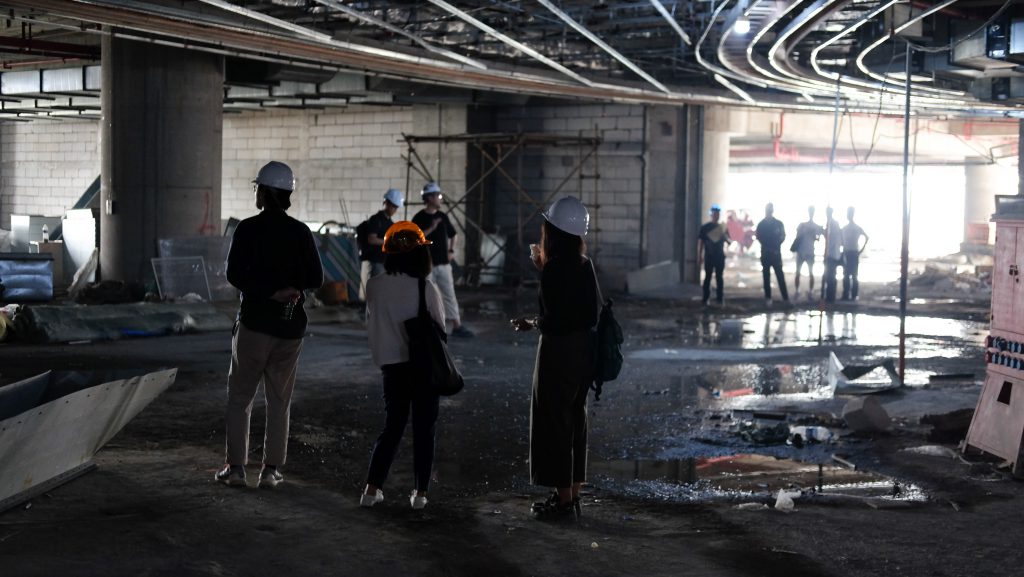
“เรารู้จนไม่รู้จะรู้ยังไงแล้วว่าใครเป็นยังไง เพราะเราคุยกันเยอะ แล้วเราพัฒนาทักษะในแง่ของการจัดการ การคุยกับคนเยอะๆ เยอะมากๆ” (นิน)
ปัจจุบัน IF มีการแบ่งหน้าที่ของหุ้นส่วนที่ชัดเจนขึ้น เป็นการตกผลึกจากการรู้จักกันและกันมาตั้งแต่สมัยเรียน พวกเขารู้ว่าจุดอ่อนจุดแข็งของแต่ละคนเป็นยังไง และใครเหมาะกับหน้าที่ในส่วนไหน นอกจากนี้การประชุมของพวกเขาจะเกิดขึ้นทุกสองอาทิตย์ในประเด็นที่ชัดเจนขึ้น ทุกคนยังรับรู้เท่ากันในเรื่องสำคัญ แต่มอบอำนาจตัดสินใจให้กับคนที่มีส่วนเกี่ยวข้องกับเรื่องนั้น และสิ่งหนึ่งที่ทำให้การทำงานของพวกเขาเป็นไปได้ด้วยดีคือสิ่งที่เรียกว่า “ความเชื่อใจ”
“เราเอาประเด็นทั้งหมดที่มันน่าจะเป็นประเด็นมาโยนแล้วมาคุยกัน เพื่อให้เห็นรอบด้าน เพื่อให้คนที่รับผิดชอบสามารถเอาข้อมูลไปย่อยหรือไปตัดสินใจได้ ดังนั้นทุกวันนี้ก็จะขึ้นอยู่ว่าเป็นประเด็นเรื่องเกี่ยวกับอะไร คนที่ดูแลในเรื่องนั้นๆ ก็จะเป็นตัดสินใจ คือก็มีการพูดคุย ถกเถียงกันไป แต่สุดท้ายแล้วคนที่จะนำไปปฏิบัติก็คือคนที่ดูแลอยู่ มันก็ชัดเจนขึ้น” (นิน)


“เราบริหารบริษัทนี้เป็นที่แรก”
ระหว่างการบทสนทนา ทั้งสามคนจะย้ำเสมอว่าพวกเขาไม่ใช่นักบริหารหรือนักธุรกิจมืออาชีพ การบริหารจัดการบริษัทของพวกเขาจึงเป็นการเรียนรู้ไปพร้อมกัน สามารถปรับเปลี่ยนได้เสมอหากพบสิ่งที่ดีกว่า ปัจจุบัน IF แบ่งระบบการบริหารงานออกเป็น 2 ส่วน คือ ส่วนของการบริหารจัดการและงานออกแบบ โดยหุ้นส่วนทุกคนจะมีสองหน้าที่ คือหน้าที่ในการบริหารจัดการ และหน้าที่ของ “Design Director” รับผิดชอบทีมออกแบบ ส่วนการบริหารจัดการของ IF ประกอบไปด้วย 5 ฝ่าย คือ 1) Operation 2) Finance 3) Marketing 4) Human Resource (HR) 5) Research and Development (R&D) ซึ่งในการบริหารจัดการแต่ละฝ่ายจะมีหุ้นส่วน 2-3 คน ช่วยกันดูแลฝ่ายนั้น ๆ เพื่อให้การตัดสินใจไม่ขึ้นอยู่กับคนใดคนหนึ่งและเพื่อให้มีเพื่อนร่วมกันคิดในส่วนงานบริหารจัดการ
สำหรับในส่วนของงานออกแบบ แบ่งเป็น 3 ส่วน ที่ทำงานภายใต้สามบริษัทในเครือ คือ “IF” “IFSO” และ “InFO” ซึ่งมีการบริหารจัดการส่วนกลางร่วมกัน ประกอบด้วย ส่วนแรกคือทีม Architecture ซึ่งแบ่งเป็นงาน Residential กับงาน Public building ที่ทำงานภายใต้ IF ส่วนที่สองคือ ทีม Interior ซึ่งแบ่งเป็น Interior studio ที่อยู่ใน IF กับทีมที่อยู่ใน IFSO และส่วนสุดท้ายคือทีมกราฟิกที่ทำงานในชื่อ InFO แม้จะมีการแบ่งงานด้านการออกแบบเป็นสามบริษัทอย่างชัดเจน แต่ในการทำงานจริงๆ ของ IF ทั้งสามบริษัทก็มักจะมีการทำงานร่วมกันเสมอ
“IF คือบริษัทที่ทำในเรื่องของดีไซน์ดั้งเดิม เป็นแบบ conventional design studio อีกอันก็คือ IFSO เกิดขึ้นจากตอนที่เราทำโปรเจคเอไอเอส ที่มันเป็นรีเทล เราตั้งทีม IFSO ขึ้นมา เพื่อที่จะดูงานประเภทที่มันเป็นงาน rollout ที่จะเน้นเรื่องของระบบในการทำงานให้เกิดประสิทธิภาพ ทำราคาได้แม่นยำ ประหยัด รวดเร็ว ก่อสร้างง่าย และสุดท้ายคือ InFO จุดเริ่มจากส่วน graphic design ของ IF แล้วในทุกวันนี้ก็มีการขยายขอบเขตของงานมากขึ้น อาจจะเรียกว่าเรา ทำเป็น communication design มากกว่าจะเป็น graphic design คือไม่จำกัดว่าเป็นภาพนิ่ง หรือภาพเคลื่อนไหว” (นิน)
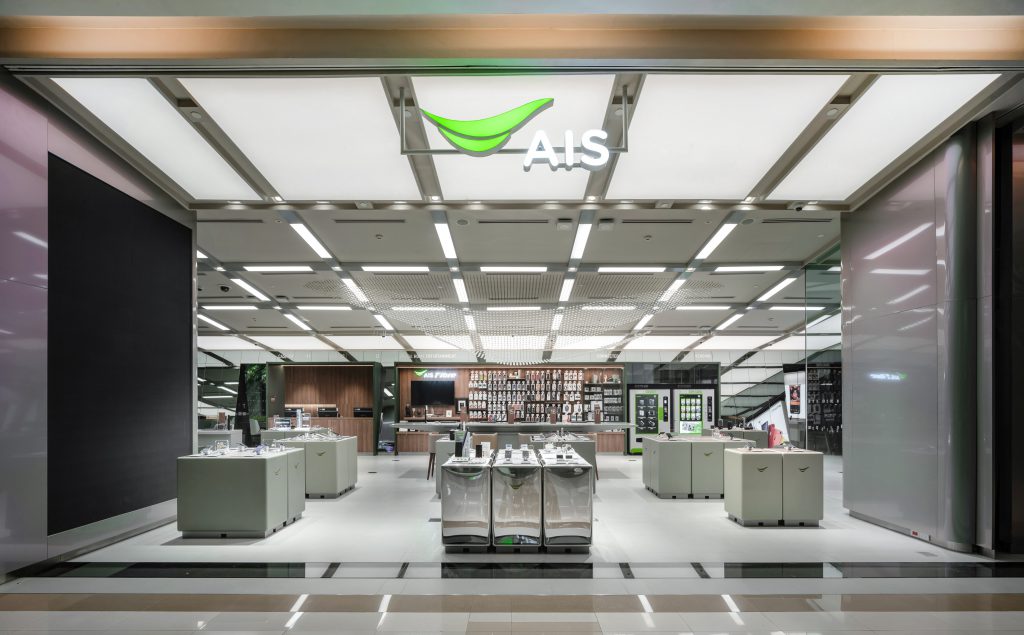

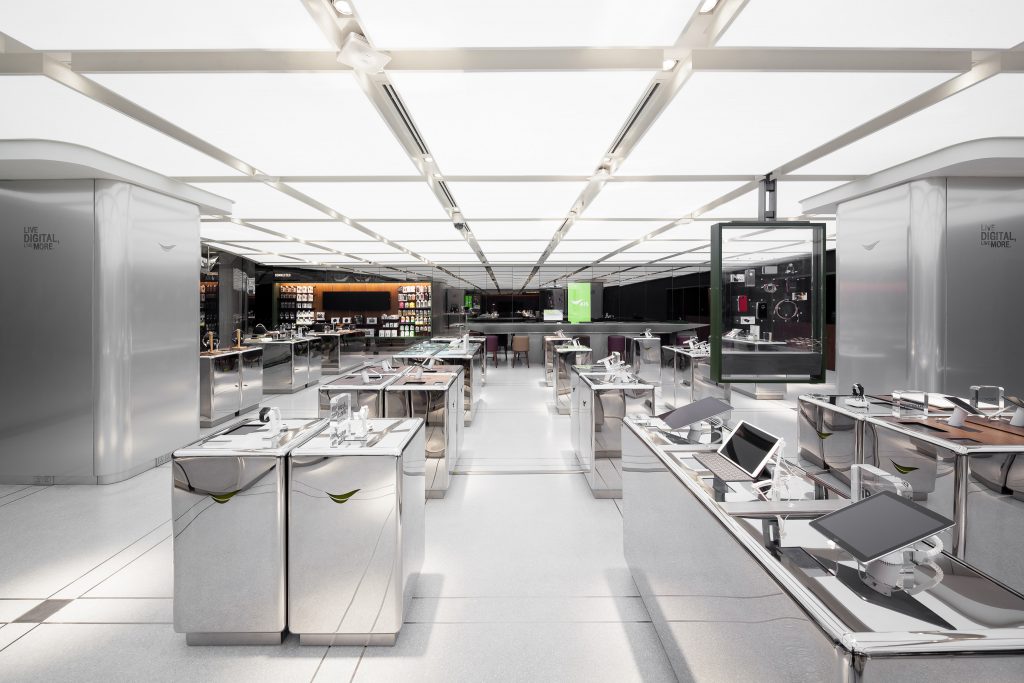
“Covid-19 ทำให้เราปรับในสิ่งที่เราไม่กล้าทำ”
การบริหาร “คน” นับเป็นอีกสิ่งสำคัญในการทำงานของสำหรับ IF สิ่งหนึ่งที่พวกเขาพยายามทำอยู่ตลอดเวลาคือการสร้างค่านิยมในการทำงานที่มุ่งเน้นในเรื่องของการทำงานที่ดีและมีคุณภาพให้แก่ทุกคนในบริษัท ซึ่งทำให้พวกเขามีเป้าหมายร่วมกันกับทุกคนไม่ใช่เพียงแค่หุ้นส่วนสิบสามคนเท่านั้น และระยะเวลาสิบปีที่ผ่านมาก็ทำให้มุมมองเรื่องการบริหารคนของพวกเขาเปลี่ยนไปเช่นกัน
“เราคิดว่าเราก็เป็นองค์กรที่ทำงานแล้วมีความสุข เมื่อก่อนเราก็มองตามอายุงาน แต่ตอนนี้เรารู้สึกว่ามันไม่ใช่เรื่องของอายุงานอย่างเดียว แต่คนที่เรียนรู้และพัฒนาตัวเองเร็ว เขาน่าจะมีโอกาส เติบโตในการทำงานมากกว่าคนที่พัฒนาและเรียนรู้ช้าง่ายๆ คือคนที่มีศักยภาพในระดับกลาง เราไม่ได้ไปกดเขาลง เขามีอัตราการเติบโต ได้รับสิทธิต่างๆ เหมาะสมตามที่เขาควรได้รับ แล้วเราก็สนับสนุนและพยายามดันเขาขึ้นไปด้วย แต่คนที่มีศักยภาพที่โดดเด่น เราก็จะพยายามผลักดันเขาให้เร็วกว่าระบบปกติ” (โอ) และจากสถานการณ์ Covid-19 ที่ทำให้หลายบริษัทปรับรูปแบบการทำงานตามสถานการณ์ที่เกิดขึ้นในช่วงเวลานั้น แต่ IF กลับแตกต่างออกไป Covid-19 ทำให้พวกเขาตัดสินใจปรับเปลี่ยนมุมมองและรูปแบบการทำงานหลายอย่าง ทั้งมุมมองเรื่องการประเมินผลและการทำงาน

“สมัยก่อนก็จะคิดว่าโอทีคือเป้าหมาย ทำงานยิ่งเยอะก็ควรจะได้เงินเยอะ แต่พอแบบอยู่ที่บ้าน มันไม่มีลงเวลาเข้า-ออกงานแบบปกติ เราก็ต้องมาลองคิดกันว่าเราเปลี่ยนระบบการประเมินใหม่ดีไหม แทนที่จะไปสนใจเวลาทำงานที่นาน เรามาสนใจการส่งงานที่ตรงเวลากับประสิทธิภาพ ผลลัพธ์ หรือคุณภาพที่ดี…จริงๆ เราก็ไม่ได้ต้องการให้คุณมานั่งอยู่ในบริษัทจนถึงสี่ห้าทุ่ม มันไม่ใช่สิ่งที่เราคาดหวังนะ เราคาดหวังว่าสุดท้ายคุณจะส่งงานได้อย่างที่เราต้องการ คุณภาพดีและภายในเวลาที่เราต้องส่งลูกค้า” (เฟย) อีกการเปลี่ยนแปลงสำคัญของพวกเขาและเป็นสิ่งที่พวกเขาคิดจะทำกันมาหลายปีคือการตัดสินใจปรับรูปแบบการทำงานเป็นการที่บ้าน สิ่งที่สะท้อนผ่านการตัดสินใจให้ทำงานที่บ้านโดยไม่ต้องเข้าบริษัทคือการพวกเขาบริหารงานโดยให้ความสำคัญกับ “คน” อย่างแท้จริง
“บางคนบ้านใกล้ก็ชอบมานั่งทำงานที่บริษัท หรือบางคน บางงานต้องคุยกัน บางคนก็รู้สึกว่าชอบเข้ามาที่บริษัทมากกว่า บางคนก็อยากเจอเพื่อน เราก็ต้องยอมรับว่าการทำงานด้วยกัน ณ ตอนนี้มันก็ยังมีประสิทธิภาพมากกว่า แต่บางช่วงเวลา บางคนเขาก็อาจต้องการทำงานอยู่ที่บ้านคนเดียว อย่างเช่น คนที่เขียนแบบเขาไม่ต้องการคุยกับใคร เขาต้องการอยู่กับตัวเอง มีสมาธิอยู่ที่บ้าน เขาต้องการแค่เขียนแบบให้มันเร็วๆ เขาก็นั่งอยู่ที่บ้าน ตื่นมาเขาก็เขียนเลย เราเลยค่อนข้างยืดหยุ่นว่ามันปรับเปลี่ยนได้เสมอ ถ้าวันหนึ่งทำงานที่บ้านแล้วไม่ดีจริง มันก็คงต้องกลับมาทำงานที่บริษัท แต่คิดว่าคงไม่มี เพราะตอนนี้มันก็ดี” (โอ)

“ตอนนี้เราทุกเราทุกคนช่วยหาลูกบอล แล้วก็เล่นกันเป็นตำแหน่ง”
“ทุกครั้งที่เราทำอะไรเราจะบอกเสมอว่า มันไม่ใช่สิ่งที่ตายตัวไปจนถึงวันสุดท้ายของโลก เราคิดว่าสุดท้ายมันก็เหมือนการทดลอง เรายังไม่รู้ว่ามันดีหรือไม่ดี แต่เราแค่รู้ว่าทิศทางนี้มันน่าจะเป็นทิศทางที่เหมาะสมกับช่วงเวลานี้ เหมาะสมกับวิธีคิดของเรา เหมาะสมกับการใช้ชีวิตของเรา เราคิดว่า ณ วันนี้มันน่าจะเหมาะ แต่สุดท้ายผลลัพธ์ถ้ามันไม่เหมาะ เราก็ต้องปรับ เราก็ต้องคิดว่าจะทำยังไงให้มันดีขึ้นมากกว่า” (เฟย)
นิน เฟย และ โอ ย้ำกับเราเสมอว่า IF ไม่ได้เป็นมืออาชีพด้านการบริหาร การบริหารบริษัทของของพวกเขาจึงค่อนข้างที่จะไม่มีอะไรตายตัวและพร้อมเปลี่ยนแปลงเสมอ การทำงานของพวกเขาคือการเรียนรู้ทุกสิ่งทุกอย่างไปพร้อมกับการลองผิดลองถูก บทสรุปรูปแบบการทำงาน IF ก็อาจจะเป็นเหมือนกับที่พวกเขาเปรียบตัวเองว่าคือทีมฟุตบอลที่ช่วงเริ่มแรกจุดหมายทุกคนต่างวิ่งเข้าหาลูกฟุตบอลโดยไม่มีการวางแผนที่ชัดเจน แต่เมื่อเวลาผ่านไปพวกเขาก็ได้เรียนรู้การแบ่งหน้าที่และมีเป้าหมายร่วมกัน นั่นคือการพาลูกฟุตบอลไปให้ถึงประตูโดยที่ต่างคนต่างทำหน้าที่ของตัวเองให้ดีที่สุด และพร้อมจะปรับเปลี่ยนเพื่อผลลัพธ์ที่ดีที่สุดเสมอ ดังเช่นที่ นิน จบบทสนทนากับเราด้วยการเปรียบการทำงานของ IF เหมือนกับทีมฟุตบอลไว้ว่า
“เราก็เหมือนกับทีมฟุตบอลทีมหนึ่ง ช่วงเริ่มแรกเราก็เป็นทีมระดับโรงเรียนประถมที่ยังไม่มีแผนการเล่น ลูกบอลไปไหน ทั้งทีมก็จะวิ่งกรูกันไป แต่ว่าพอทีมเริ่มโตขึ้น มีมาตรฐาน มีการวางแผนมากขึ้น แต่ละคนก็จะมีหน้าที่ของตัวเองชัดเจน มันก็จะไม่เกิดเกมส์ที่ว่าลูกบอลไปไหนแล้วกรูกันไปทั้งทีม แต่ละคนก็จะรับผิดชอบหน้าที่ของตัวเองไป การบริหารจัดการของเราก็เหมือนกัน เพราะจริงๆ แล้วจุดแข็งของเราคือการมีหุ้นส่วนหลายคน มันทำให้เราสามารถที่จะกระจายตัวไปในส่วนต่างๆ เดิมทีระบบแรกคือเรามีกันหลายคนแต่เราดันกระจุกตัวกัน เหมือนไล่เตะฟุตบอลลูกเดียว มันไม่ดีเลย เราก็เลยเปลี่ยนแปลงมาเป็นแบบนี้ ที่มันควรจะเป็นมาตั้งนานแล้ว”

‘Integrated Field’, widely known for their abbreviated moniker ‘IF’, has been somewhat of a household name in Thailand’s architectural industry with projects that have been mentioned in various media platforms. But what’s equally interesting is the way the studio has been run throughout the years, especially with 12 founding partners, making many wonder about the management and work philosophy behind IF’s continuous success. We had a chance to meet with three of the partners, Kanin Manthanachart, Lerpong Rewtrakulpaiboon and Korkiat Kittisoponpong to talk about IF’s stories and the approaches they have taken when it comes to managing their design firm, in aspects and details that have never been revealed anywhere else.
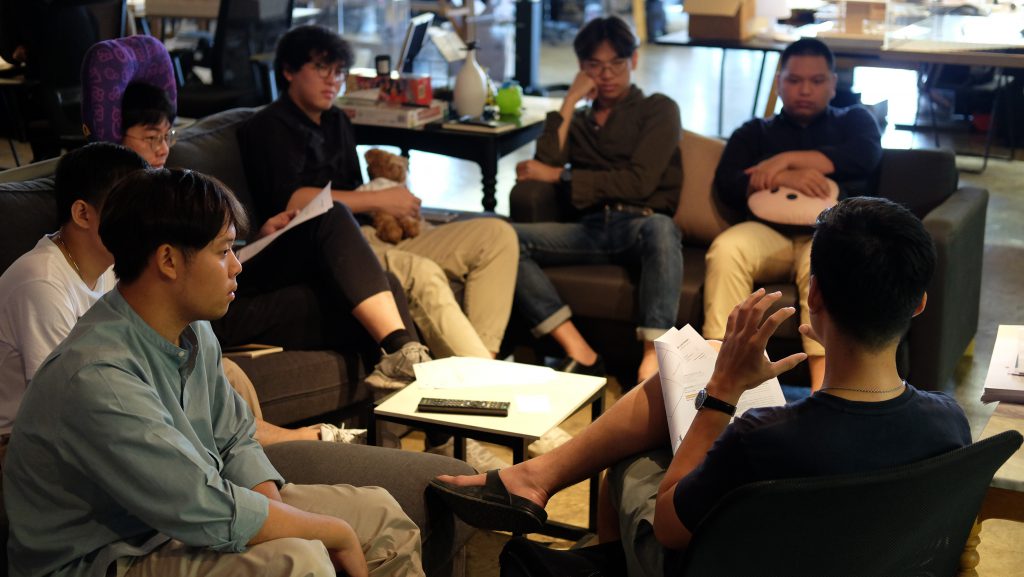
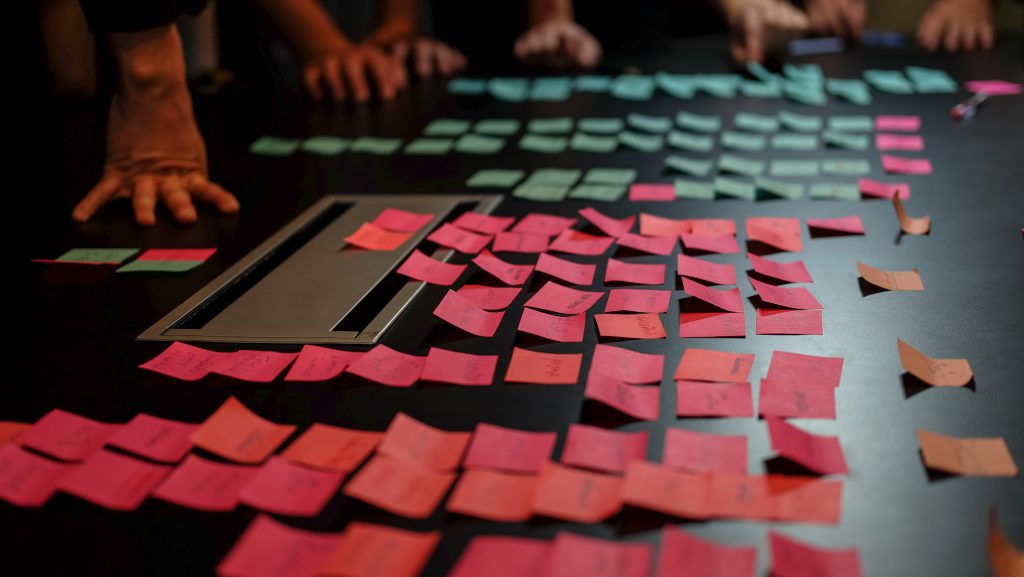
“It began with comfort and compatibility”
The statement probably best defines IF’s genesis. The twelve founders are university friends. They studied, participated in activities like most college kids would, basically spending their early years as young adults together. After graduation, each of them parted ways to pursue their own paths. In the meantime, some of them got together to work on projects they shared common interests in. It was in 2009 when they joined forces to work on the design competition for the new Parliament Building. It was the biggest assembly they had ever managed to design for since graduation. They took the team to the final ten and were the youngest team among the finalists. That project became the official starting point of IF as we know them today.
“We talked about how there was this great potential—all of us working together. It might not be just about the work we created, but also about the chemistry, the way we think and look at things similarly. From that day, we began talking about really working together,” Korkiat recalled.
They founded IF in 2011, meaning 2021 is the year they enter their ten-year milestone. Initially, the conversation about putting together a company had more people involved. But due to certain conditions and factors at the time, it came down to the twelve partners; eleven of them were Chulalongkorn University’s Faculty of Architecture alumni, from five different departments. The remaining member hailed from KMITL’s Faculty of Architecture. In its early days, the studio’s objective wasn’t exactly commercially driven, but geared more towards being able to work with friends to create good projects that would be successful and recognized for their design. It was a collective where twelve different individuals worked on projects that extended beyond the realm of architecture, hence the name Integrated Field.

“The real world is so big. Ours was so small.”
Being twelve partners of a company, they used to think that what they had was diverse enough. But they’ve grown and gradually come to realize that the perception they had about diversity was only within the frontier of design. Each member furthering their education or working on new projects were their attempts to fill the void; what they thought was missing. The experiences allowed them to leave the world of design they knew, enabling them to deepen and broaden their knowledge. They learnt more and worked harder, as a result.
“We tried to leave our comfort zones as much as we could. We’re still trying today, to learn and find elements that interest and motivate us. We always make sure to give it a go. Now, there’s the rise of online markets and we’re interested. We decided to set up a team, and have let people who are interested be a part of it to explore the platform. It’s basically a process of trial and error. If we didn’t try it, we’d never know,” said Korkiat.
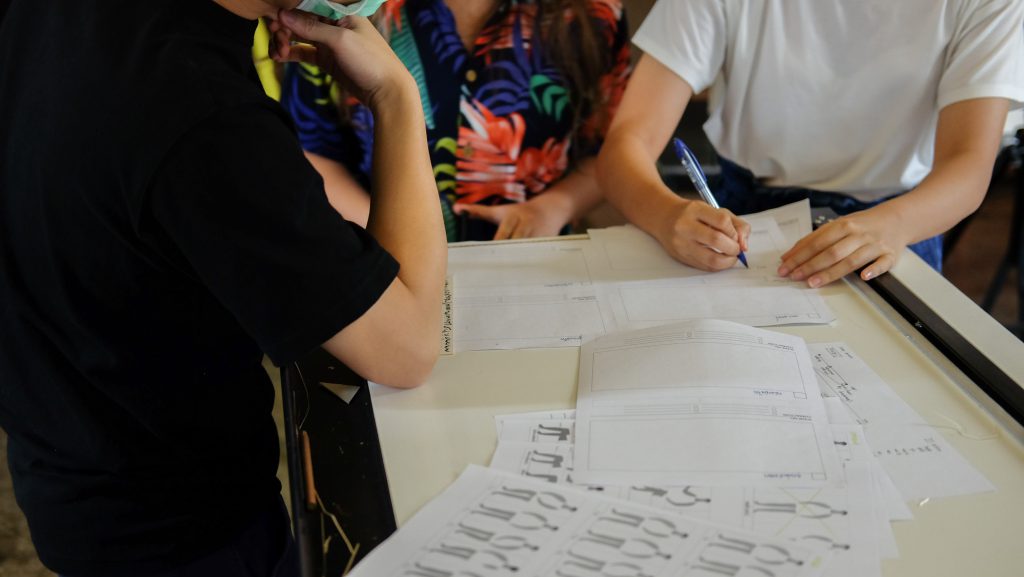
“There’s no need to ask about things we’d already discussed and settled.”
In the early days, not all the twelve partners were present at the company. They would find time and take turns to oversee projects, and gave the authority for the ones who worked full-time at the studio to be the main decision makers. If there were really serious matters to be discussed, a meeting would be held for all the twelve partners to make the final decision together. It took them five years to finally and fully unite as a complete team. Since their first day, IF has now grown into a firm with 35 staff. Last year, they welcomed their thirteenth partner, who is one of the first employees the firm hired, reaffirming that having a lot of partners has never been a problem for them.
When all the twelve partners started working together full-time, the first five years was summed up as something along the lines of ‘everyone had to be informed about everything’. They provided opinions, and made decisions together, whether they were management or design-related issues. Communication between the twelve partners was something they prioritized, but in reality, it was undoubtedly challenging to run a company with that many partners who all had their own thought processes, ideas and opinions. They later found out that the process consumed too much time and effort, and the discussions ended up diminishing the efficiency and productivity of their work. Nevertheless, there’s a hidden upside behind the whole process, it granted them the opportunity to discuss different perspectives, and learn more about each other.
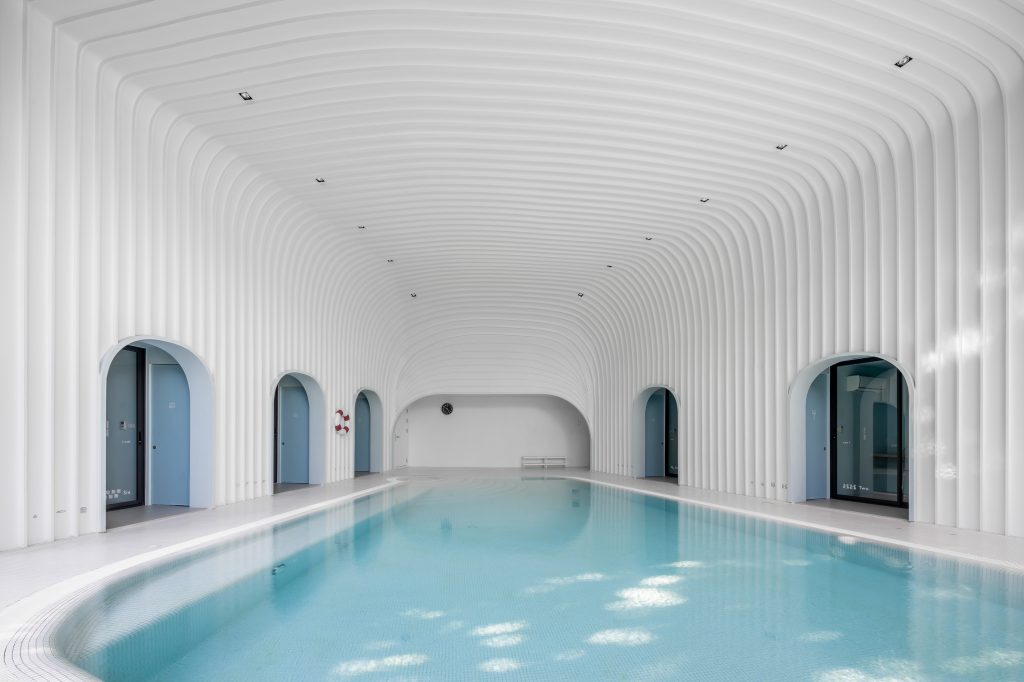
“We know each other so well because we have talked to each other through it all. We’ve developed our management and communication skills, a lot, like a lot.”, said KANIN. Now, roles and responsibilities are assigned to different partners more distinctly. The time they’ve spent getting to know each other since college has finally crystalized. They are aware of each other’s strengths and weaknesses, and know exactly who would be best suited at a certain job. At their partner meetings, which takes place every two weeks, different issues are discussed more efficiently. Everyone is equally informed about all the important matters but the decision-making processes are assigned to the people in charge. ‘Trust’ is one of the main elements that has made their partnership work through all these years.
“We bring up all the important matters and discussed them together so we can look at them from all sides. It allows the person who’s responsible to have all these constructive suggestions to make the most suitable decision. These days, we would discuss whatever issues we have, and the ones supervising the matter would make the final decisions. We talk and debate but the one who is in charge of the situation is the one who makes an action happen. It’s clearer this way.”, Kanin told us.
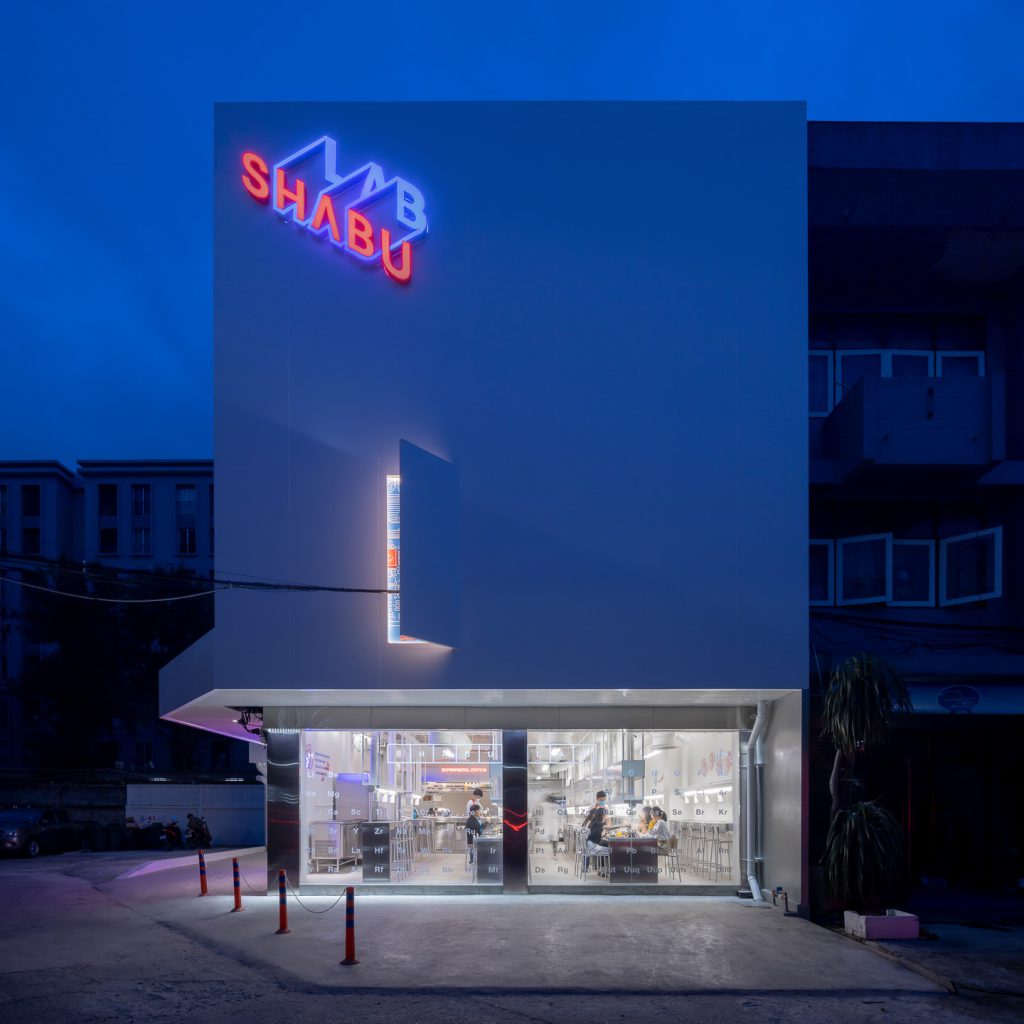
“This is the first company we have run.”
During the conversation, the three partners kept saying that they’re not professional executives or business experts. They have managed the company by learning, together, and are always ready to adjust if there’s a better way to settle matters. Currently, IF divides its business operation into two parts: management and design. All the partners have two roles; the company’s executives and design directors overseeing the design teams. The management consists of five divisions: 1) Operation 2) Finance 3) Marketing 4) Human Resources (HR) 5) Research and Development (R&D). Each division has 2-3 partners as supervisors so that the decision-making isn’t up to one particular person. It also enables collaborative effort between the partners when it comes to managing the company.
For the design section, there are three subsidiaries, “IF”, “IFSO” and “InFO”, operated and managed under the same ‘IF’ firm. The Architecture division, which is divided into Residential and Public Building, is under IF. The second division is the Interior, which includes the studios operated under IF and IFSO. The last division is the graphic design team working under the InFO division. Despite separating the design units of the firm under three subsidiaries, all the teams always collaborate and work together.
“IF is a conventional design studio. For example, when we worked on a retail project for AIS, we set up IFSO to oversee the rollout. It allowed us to focus on enabling the working system that could improve efficiency while being less costly, and faster and easier to build. InFO began with IF’s projects’ graphic design part. Currently, it extends to be more comprehensive, by working on aspects of communication design rather than just graphic design, encompassing both still and moving images.”, said Kanin.
Covid-19 has forced us to adapt and tackle obstacles we never dared to do.
Managing ‘people’ is another important factor in the way IF operates. One of the things they have been trying to motivate and maintain among the team members is building a sense of value that focuses on producing good, quality designs. It creates a common goal between all the staff, not just the thirteen partners. After ten years, their perception on people management have changed as well.
“We think we’re running a company where people feel happy to work in, but for the people who learn fast and constantly develop, they deserve a better chance to grow. Simply speaking, we never put down those with moderate performance and ability. They grow at their own pace and receive the benefits they rightfully earn, and we always support them to do better and improve. But those with outstanding potential, there’s definitely more incentive to push them forward.”, said Lerpong.
When Covid-19 hit, several companies have had to adjust to different work arrangements that suits current situations. IF has taken a different approach. The pandemic made them decide to change the way they view things, how they work, including the way they evaluate performance and achieve goals.

“Working overtime used to be the goal we use to measure how one gets paid. But with everyone now working from home, the working hours differ. We were discussing the possibility of changing the evaluation method. Instead of focusing on extended working hours, should we be more focused on punctuality, efficiency, results and quality? We actually never wanted our staff to stay at the studio until late at night. That was never our expectation. We expected them to submit assignments on time, with good quality and within the deadline.” Korkiat mentioned.
Another monumental change, which has been a concept they have been thinking of implementing for several years, is to adopt the work-from-home model. Without the restriction of working hours, the partners are able to manage the company by truly putting an emphasis on ‘people’.
“The staffs living close by sometimes like to come to the office to work. There are times when they feel it’s better to discuss an issue or idea face-to-face, so they prefer coming to the office. There are also a lot of times when they want to see each other because they kind of miss each other. We have to admit that working together in the same physical space is still a more efficient method. But there are people who like to stay at home when they work; for instance, a draftsperson likes to be alone and undisturbed when they work, so working from home is more efficient for them. They can start working right after they wake up. That’s why we’re quite flexible on how things can be adjusted and carried out. If one day, it’s proven that working from home isn’t a good way to go, we will go back into the office. But I don’t think that will happen because so far, it’s been good.”, said Lerpong.
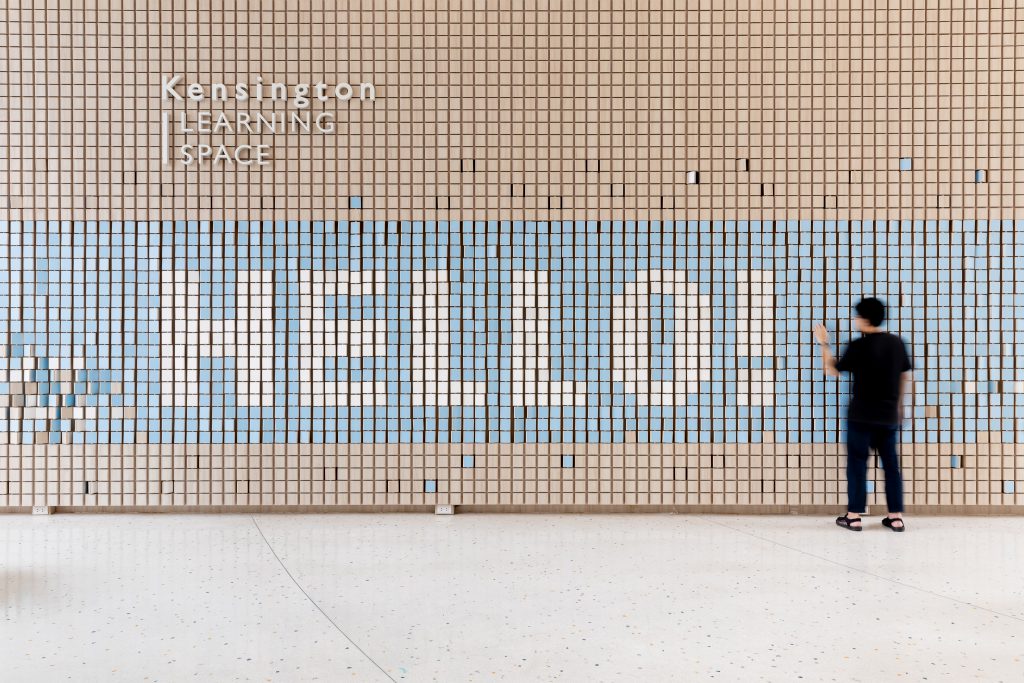
“We’re passing the ball, playing as a team.”
“Every time we’re working on a project, we always say that this work isn’t going to stay unchanged until the end of the world. At the end of the day, it’s all about experimenting. We don’t know for certain if it is going to turn out to be good or bad. All we know is that this should be a right direction for a certain situation, for our way of thinking or our lifestyle. We may think that something suits us at this point in time, but if in the end, it doesn’t work, we have to adjust and find a way to make it work better.” Korkiat described.
One of the things the three partners have kept emphasizing is that management isn’t IF’s expertise. They don’t have a definite method or process to run the company with and they’re always open and prepared for changes. To them, working is learning about everything alongside trying both the rights and the wrongs. If we were to summarize IF’s work philosophy and methodology, it would probably be like how the partners metaphorically compare the firm to a football team. They used to tackle the goal by running toward the ball without any clear plan. As time has gone by, they have gradually learnt to split roles while still sharing the same objective, and that is to help pass the ball and score a goal. Each person is doing their best and is ready to adapt to attain the best possible final outcome, together. Kanin explained the metaphor to wrap up our conversation.
“We’re like a football team. We started off as an elementary school team, playing the field without any game plan and everyone was chasing whichever direction the ball went to. As our team grows, we’ve developed our own standard, our plans have become more strategic, and each member now has their own role. There isn’t a scenario where the whole team chases the ball all at the same time anymore. Each of us now knows what our tasks are. It’s the same story with our management. Our strength actually lies in having multiple partners, because it enables us to distribute roles and responsibilities more comprehensively. Initially, we ran things by centralizing everything. We have many people but we didn’t distribute our roles and contributions. It’s like we were all running after that one ball, and it wasn’t good. That’s why we changed. Like we should have done a long time ago.”

